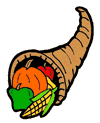

Family Network



|


Family Network


|
|
 Everything Brunette 
In South America, many of the native Indian cultures contain expressions of gratitude and thanksgiving, and in modern Brazil a special public day of thanksgiving and prayer has been designated for the fourth Thursday of November every year since 1949.
The Kwanzaa celebration is based on African harvest traditions. Kwanzaa means first fruits in Swahili. The celebration starts on December 26 and lasts for 7 days.
Green Corn Festival or Ceremony is a Native American harvest celebration. Creek, Cherokee, Seminole, Yuchi, and Iroquois Indians as well as other Native American tribes celebrate this ceremony. This ceremony is usually held when their is a full moon, which meant the first corn crop was ready to harvest. The date was not able to be determined ahead of time; it was up to the corn. It is a time to be thankful and also a time of forgiveness.
The ceremony lasts for several days. The holy man was a symbol of health, life, and spiritual power tends a sacred fire. The first few days are known as Busk, people fast, and cleanse themselves and their homes. Men and women drink an herbal concoction, the "Black Drink" was suppose to help cleanse and purify their bodies. Then the first corn harvest is tasted followed by dancing, singing, playing, and feasting. Their are many foods eaten at the feast with an emphasis on the corn such as, roast corn, corn tortillas, corn soup, corn bread.
Their is a ball game which is quite popular in which teams of boys and girls try to hit a target on a large pole. The game varies, from tribe to tribe.
The Creek Indian women perform a Ribbon Dance involving four women appointed by the elder's of the tribe to carry out the dance in which they are adorned with vivid ribbons, rattles, and shells dancing for up to 3 hours.
The Santa Ana Pueblo, located north of Albuquerque, has an annual feast day, held on July 26th with a green corn dance and fiesta.
Harvest Moon or as the Cherokee Indians know it Duninudi is in October at a time of traditional "Harvest Festival" Nowatequa when the people give thanks to all the living things of the fields and earth that helped them live, and to the "Apportioner" Unethlana.
Cheno i-equa or "Great Moon" Festival is customarily held at this time.
The corn harvest referred to as "Ripe Corn Festival" was customarily held in the early part September of the nut moon or Duliidsdi to acknowledge Selu the spirit of the corn. Selu is thought of as First Woman.
The festival respects Mother Earth as well for providing all foods during the growing season. The "Brush Feast Festival" also customarily takes place in this season. All the fruits and nuts of the bushes and trees of the forest were gathered as this time. A wide variety of nuts from the trees went into the nut breads for the various festivals throughout the seasons. Hunting traditionally began in earnest at this time.
In the month of August which is the Fruit Moon month or Galoni the foods of the trees and bushes are gathered. The various "Paint Clans" begin to gather many of the herbs and medicines for which they were historically known.
Green Corn festivals are commonly held at this time in the present day. The "Wild Potato" Clans AniNudawegi, begin harvesting various foods growing along the streams, marshes, lakes and ponds.
The Plains Indians ceremony that celebrates good harvests of grain is picturesque and fanciful. People that participate dress in traditional costumes decorated with woven or painted designs, which have been handed down in families; they also wear a high headdress of feathers, beads, and shells.
      
Mens.Net | Womens.Net | Mothers.Net | Fathers.Net | Grandparents.Net | Teenagers.Net | Santas.Net | EasterBunnys.Net | JackOLanterns.Net | FatherTimes.Net | StValentines.Net HarvestFestivals.Net | BirthdayCelebrations.Net | ToothFairys.Net
 Please read our Legal Statement and Privacy Policy.
|